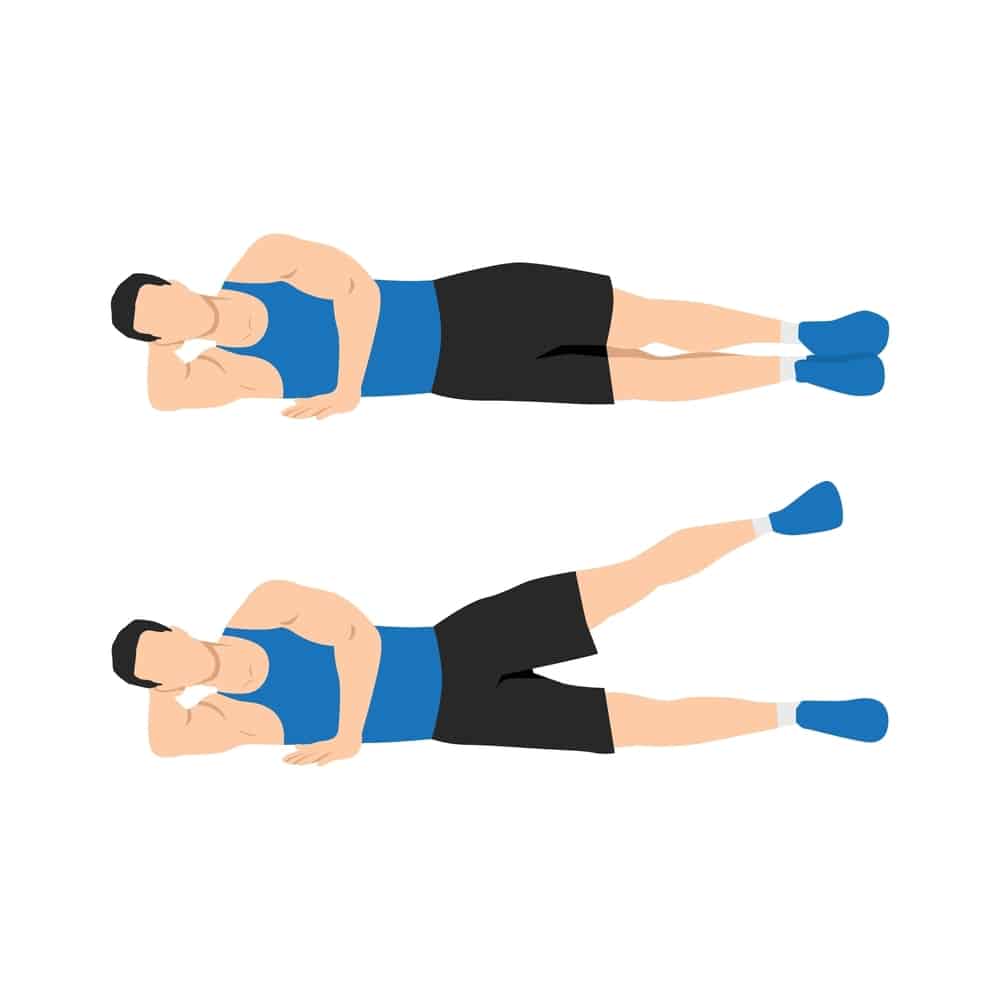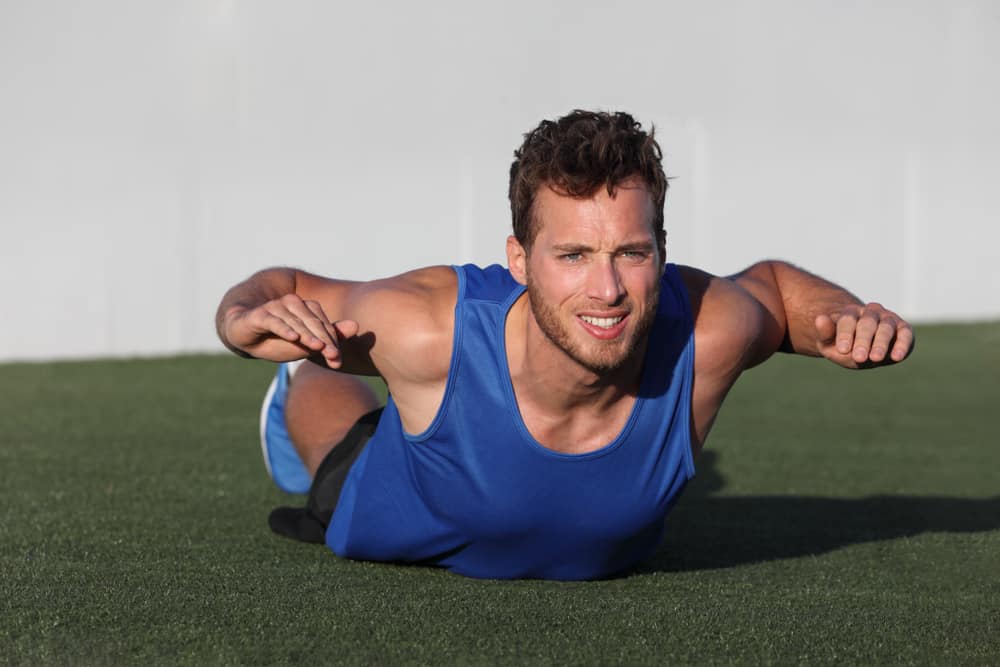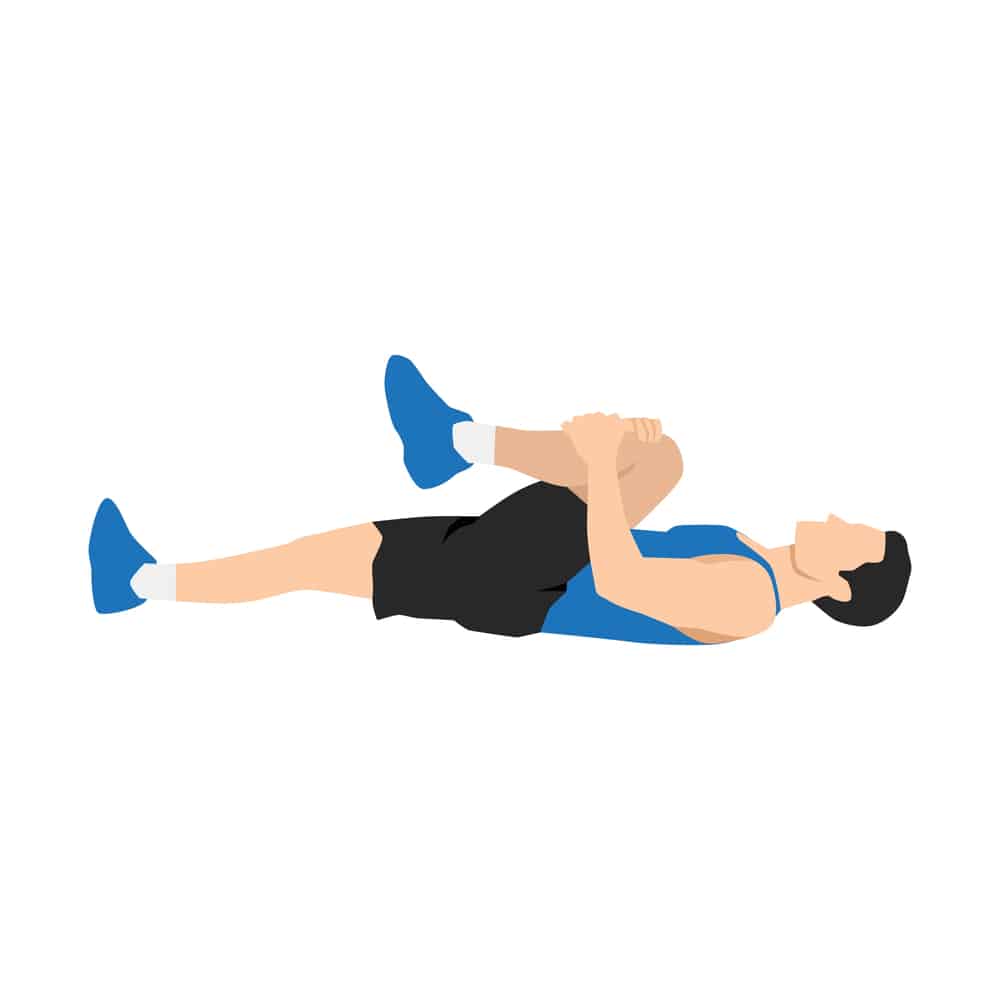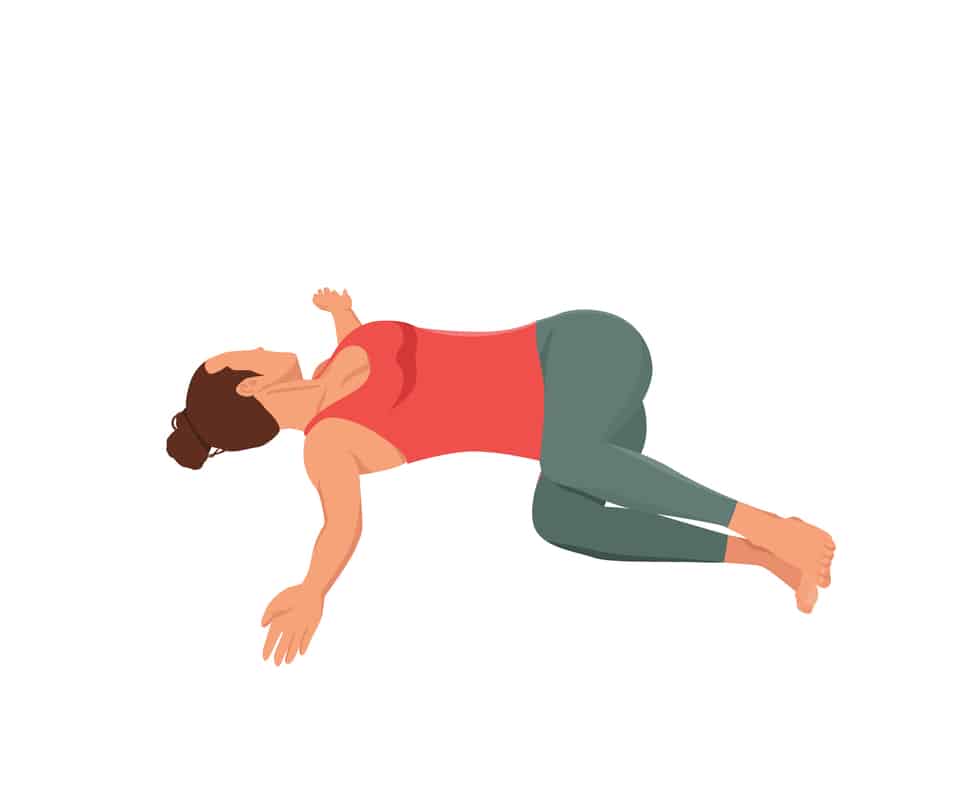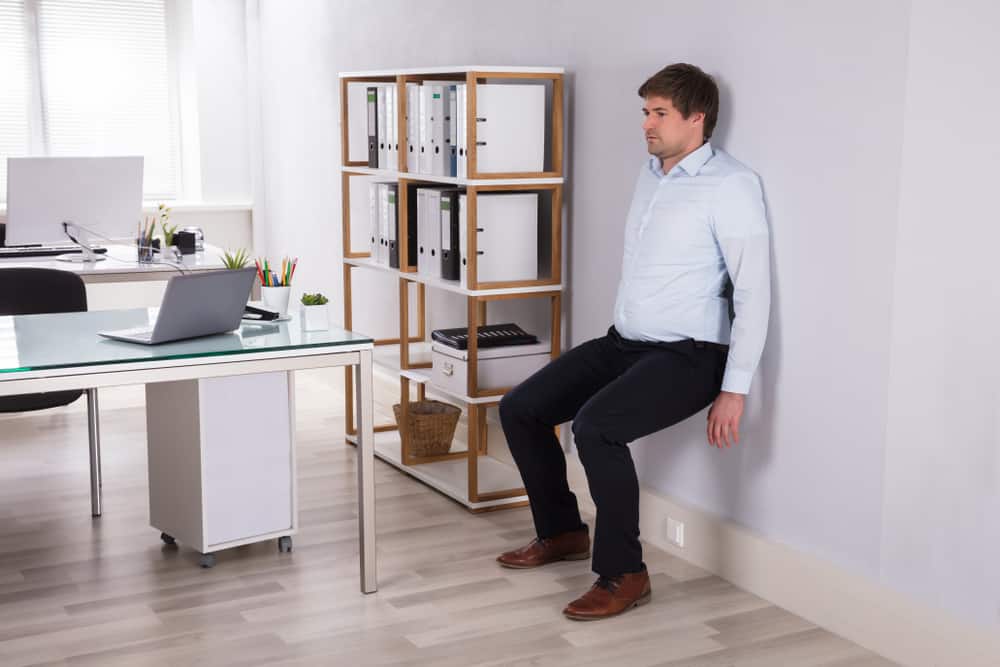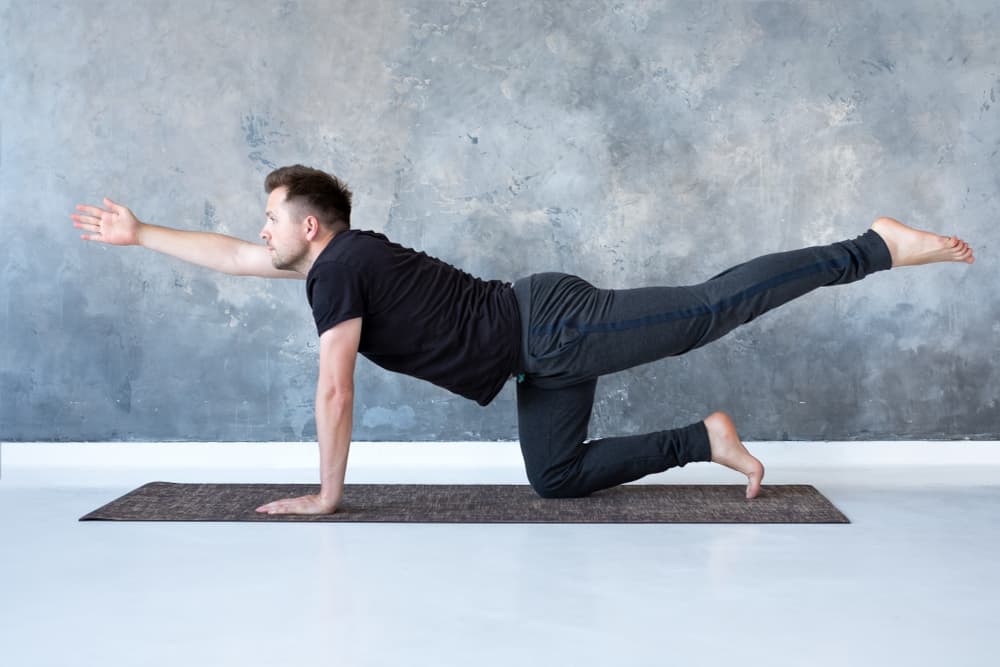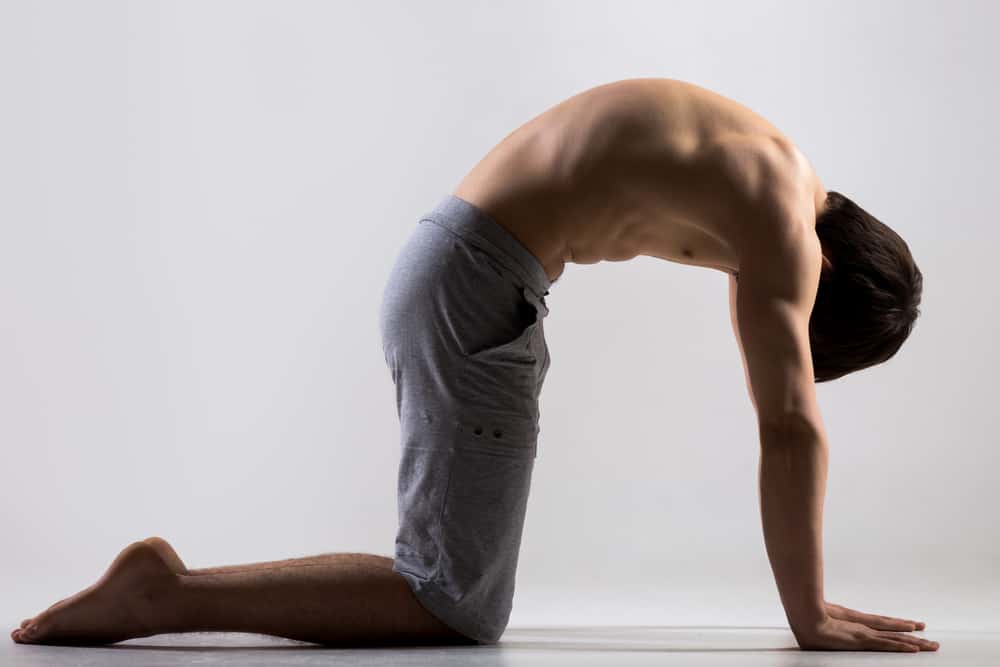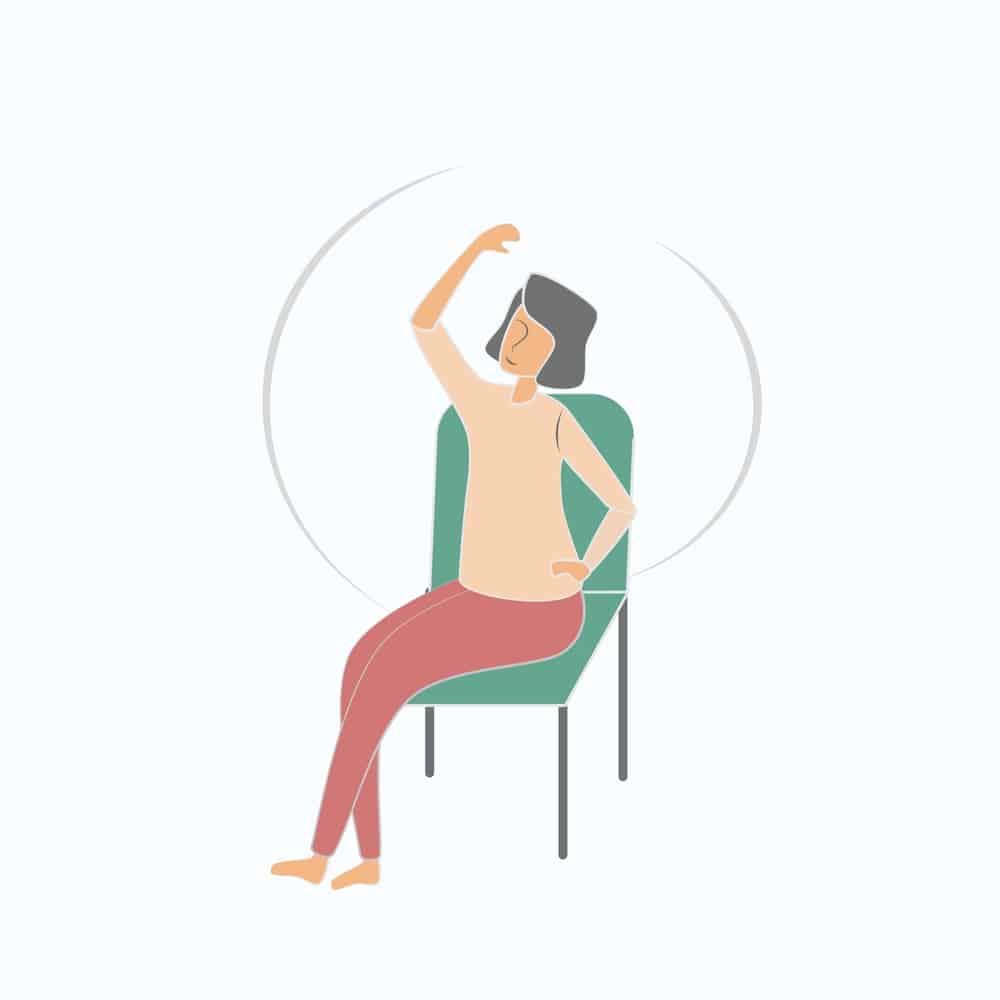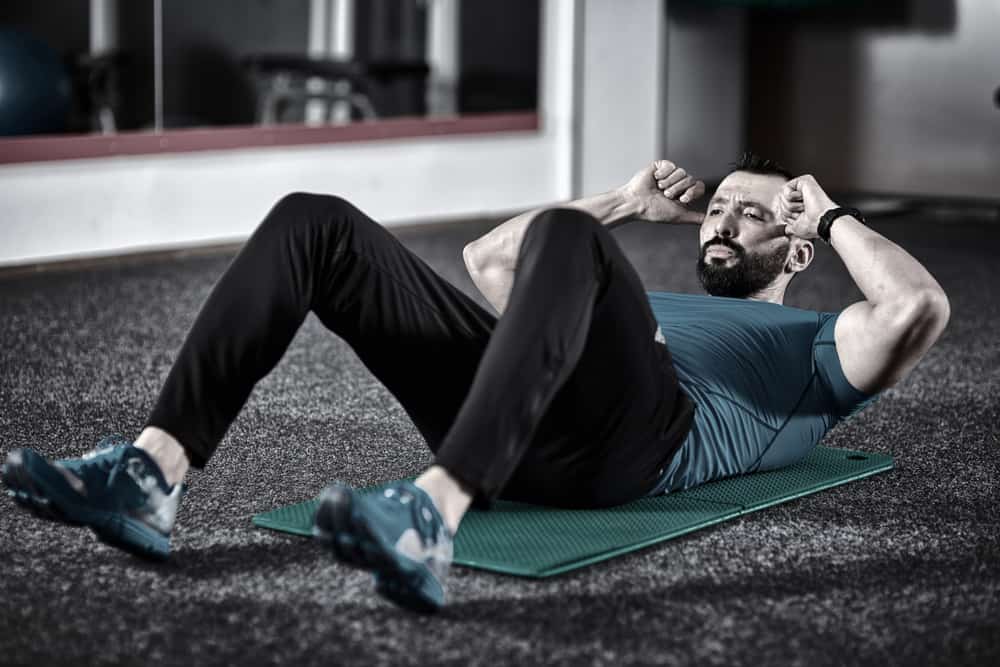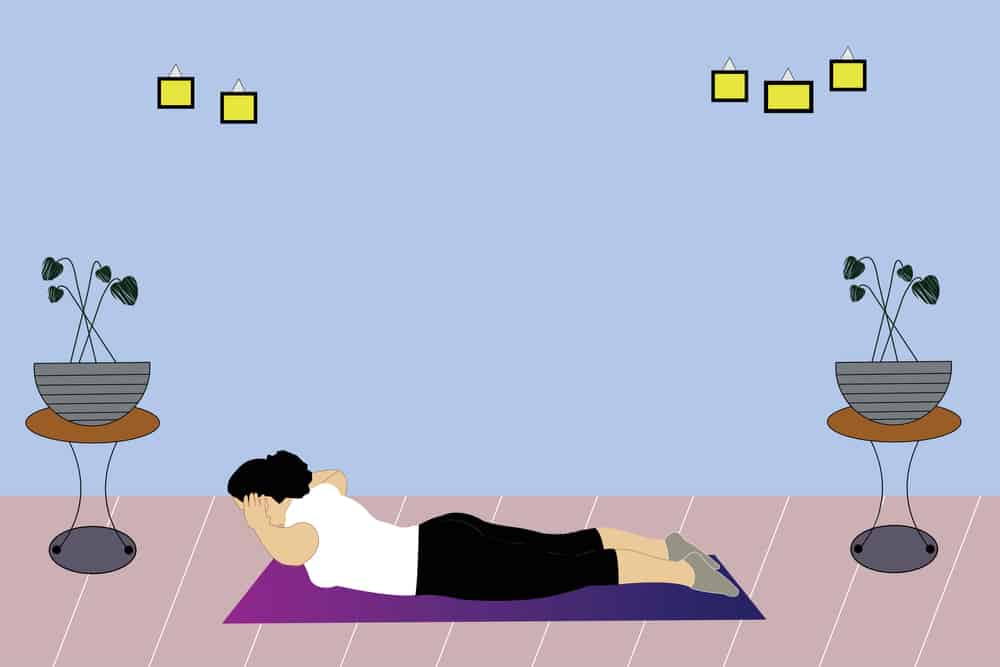15 Top Exercises for Lower Back Pain
Lower back pain is the most common condition people often complain about. We are sure you are not exempted entirely from this majority. It usually does not involve any serious condition or underlying cause. It’s recovery is usually speedy and you will feel amazing in a month’s time.
Our spine is made up of cervical, thoracic and lumbar vertebrae. You can feel pain along any area of the spine, could be midway or in the neck region but if you are experiencing lower back pain, then that is usually concerned with the lumbar region. There are a number of reasons that make you feel that pain in your lower back. It acts like an alarm from your body so that you can identify what’s wrong.
In order to avoid worsening of the condition, lower back stretches and lower back exercises are recommended. All of which comes under the category of physiotherapy for back pain.A physiotherapist will usually monitor your condition and then physio for back pain based on your personal condition.
Lower back pain exercises can help largely to cope with pain. They not only include physio exercises for lower back pain but also lower back strengthening exercises so as to prepare the body for further encounters. Physio for back pain has a huge role in normalising your everyday activities.
Following are the exercises for lower back pain:
Exercise 1: Bridges
 Description
Description
- Lie on the ground, hip-width apart, with your feet flat on the floor.
- Press your feet into the floor with your hands by your sides as you slowly elevate your buttocks off the ground until your body is in one straight line. Keep your shoulders pressed toward the floor. Hold the position for 10 to 15 seconds.
- Lower yourself.
- Repeat 15 times more.
- Make three sets. Between each set, take a one-minute break.
Exercise 2: Lying lateral leg raises
Description
- Lie on one side with your lower leg on the ground, slightly bent.
- Draw your belly button in toward your spine to activate your core.
- Raise your top leg without moving your other limbs.
- At the top, hold for 2 seconds. Rep 10 times more.
- Repeat on the opposite side. On each side, do three sets.
Exercise 3: Partial curls
Description
- Lie down on the ground with your knees bent and your feet flat on the floor.
- Make a cross with your hands across your chest.
- Take a deep breath in and out. Pull your belly button in toward your spine as you exhale to stabilise your abdominals.
- Slowly elevate your shoulders a couple inches off the ground. To avoid lifting up with your neck, keep your neck in line with your spine rather than curing it.
- Return to your original starting position.
- Repeat 10 times more. Make three sets.
Exercise 4: Drawing-in manoeuvre
Disclaimer: This video belongs to “Dr Donald A Ozello DC” Youtube channel. We did not produce this content and do not own it.
Description
- Lie on the ground, hip-width apart, with your feet flat on the floor.
- Place your hands by your sides and relax.
- Take a deep breath in. Pull your belly button in toward your spine as you exhale, using your abdominal muscles without causing your hips to tilt.
- Hold the position for 5 seconds.
- Rep 5 times more.
Exercise 5: Supermans
Description
- Lie down on your stomach with your arms outstretched in front of you and your legs straight.
- Raise your hands and feet 6 inches off the ground, or until you feel a contraction in your lower back.
- Lift your belly button off the floor to activate your core muscles. With your hands and feet, reach out. To avoid neck strain, keep your gaze on the floor during this exercise.
- Hold the position for 2 seconds.
- Return to your original starting position. Repeat 10 times more.
Exercise 6: Knee-to-chest stretches
Description
- On the floor, lie on your back.
- Keep both feet flat on the floor while bending the knees.
- Pull one knee in toward the chest with both hands.
- Keep the abdominals tight and the spine pressed into the floor for 5 seconds while holding the knee against the chest.
- Return to your original starting position.
- Replace the opposite leg and repeat the process.
- 2–3 times a day, repeat with each leg.
Exercise 7: Lower back rotational stretches
Description
- With your knees bent and your feet flat on the ground, lie back on the floor.
- Gently roll both bent legs to one side while keeping the shoulders firmly on the floor.
- For 5–10 seconds, stay in this position.
- Return to your original starting position.
- Return to the starting position by gently rolling the bent knees to the opposite side, holding, and then returning to the starting position.
- Twice a day, repeat 2–3 times on each side.
Exercise 8: Wall Sits
Description
- Stand about 10 to 12 inches away from the wall with your back to it.
- Lean against the wall with care until your spine is flat on it.
- Slowly slide down the wall until your knees are slightly bent.
- Continue to lean against the wall with your low back.
- Hold for a count of ten before carefully sliding back up the wall.
- Repeat 8–12 times more.
Exercise 9: Bird Dog
Description
- Begin by getting down on your hands and knees.
- Activate your abdominal muscles by clenching your fists.
- Raise and stretch one leg behind you while maintaining your hips level.
- Keep your hands in that posture for a total of five seconds.
- Change to the opposite leg now.
- Rep eight to twelve times for each leg.
- Extend the duration you hold each lift for a greater challenge.
- Lift and extend your opposite arm in front of you for each repetition.
- Allowing your lower back muscles to sag is a bad idea.
- Maintain your position—do not raise your arms or legs higher than the low back position allows.
Exercise 10: Pelvic tilts
Description
- Lie back on the floor with your knees bent and your feet flat, arms by your sides.
- Arc your lower back gently and push your tummy out.
- Hold for 5 seconds before letting go.
- Pull the bellybutton in toward the floor and flatten the back.
- Hold for 5 seconds before letting go.
- Increase the amount of repetitions each day until you reach 30.
Exercise 11: Cat stretches
Description
- Kneel with your knees hip-width apart on your hands and knees.
- Pull the bellybutton up toward the spine as you arch your back.
- Allow the muscles to slowly relax and the abdomen to fall toward the floor.
- Return to your original starting position.
- 3–5 times a day, twice a day
Exercise 12: Seated lower back rotational stretches
Description
- Place your feet flat on the floor and sit on a stool or chair with no arms.
- Twist to the right from your core, maintaining your hips square and your spine tall.
- To support the stretch, place the hands behind the head or on the right knee with the left hand.
- Hold the position for a total of ten seconds.
- Carry on with the exercise on the left side.
- 3–5 times on each side, twice a day.
Exercise 13: Partial Crunches
Description
- Lie back with your legs bent and your feet flat on the floor.
- Raise your shoulders off the floor with your hands behind your head or arms crossing over your chest.
- Maintain a firm grip on your stomach muscles.
- Exhale as you raise your shoulders.
- Avoid using your elbows to lead (or yanking your neck off the floor with your arms).
- Hold the position for one second.
- Then, in a calm manner, lower yourself back to the floor.
- Rep between eight and twelve times more. Remember to maintain appropriate form to avoid unnecessary spine stress.
- Throughout the exercise, keep your feet, tailbone, and lower back pressed against the floor.
Exercise 14: Press-up Back Extensions
Description
- Lie down flat on your stomach.
- Placing your hands directly beneath your shoulders is a good idea.
- Apply pressure to your hands.
- You should notice your shoulders starting to lift off the floor.
- Set your elbows on the floor squarely beneath your shoulders if you can comfortably do so. Then hold this position for a few seconds.
Exercise 15: Reclined Supine Twist
Description
- Lie facedown with your arms at your sides.
- Keep your left leg straight on the floor while bringing your right knee into your chest.
- Gently guide your right knee across your body and toward the floor on the left side of your body using your right hand.
- Although your right shoulder may want to lift off the ground, aim to keep both shoulders flat on the floor, even if this limits how far your knee may travel down.
- Repeat on the opposite side.
Physiotherapist, osteopath or chiropractor?
They are all healthcare professionals and ensure to reduce lower back pain and its symptoms. Their mode of treatment is similar i.e manual therapy their approaches are slightly different towards the treatment. Let us find out what is the difference between them:
Physiotherapist:
A physiotherapist is a person qualified to treat disease, injury, or deformity by physical methods such as massage, heat treatment, and exercise.
Physiotherapists usually work on the whole body to be restored to normal after being affected by illness or injury. They analyse the functions of both nerves, muscles and bones that are affected and treat them with exercise and manual therapies to restore its ability. Encouragement is the most important part of motivation to get an active part in one’s own physical therapy and physiotherapist’s job is to ensure that you stay on the right track.
Osteopath:
An osteopath is a licensed physician who practices medicine using both conventional treatments and osteopathic manipulative medicine, which focuses on relieving pain and tension in the musculoskeletal system.
They analyse the overall health of a person and on that basis makes sure that your bones, joints and muscles are working perfectly in a well coordinated manner to achieve the basic aim of living that is movement. They mainly focus on manual therapies.
Chiropractor:
Whereas, chiropractors focus more on the function of the spine and pelvis and it’s alignment and effect on the nervous system through the use of manipulation.
They mainly focus on how your nervous system and general health is affected by dysfunction in bones, joints and muscles. They mainly manipulate the role of the spine but may use other techniques too.
In general, you can use any of these professionals to treat your lower back pain. All will do a great job attending regarding treatment of lower back pain. It is upto you to find out what works best for you. If you are seeking physiotherapy for back pain in uk, then you should definitely contact us and book an appointment.But if you are planning or have been referred to by a general physician to an Osteopath or a Chiropractor, then you can definitely look for someone near to you.
We are always here to help you get your best physio experience for lower back pain. Book an appointment now.
What will happen when I see a physiotherapist?
The first and the foremost step in a physiotherapy treatment is taking history. Your physiotherapist will take a detailed history about your medical conditions (if any), your lifestyle, how active you are, if you are on medications, what triggers your back pain and what symptoms do you have?
Next step is the examination. They will thoroughly examine your condition looking at how you move and how bad your back is at mobilising with routine tasks. They may also analyse using neurological assessment equipment. They may also require you to remove your clothes and if you are comfortable with a chaperone, they will provide you with one for better assessment.
Then comes the treatment phase. At this point your physiotherapist will devise a treatment plan for you depending on your condition. They will in the meanwhile also tell you about the risk factors of the treatment if lest your condition is chronic.
Do not be afraid to ask if you do not understand your treatment plan at any point. Since, you will be asked about your consent.
Overall your physiotherapy session will include all the exercises mentioned above but let us just give you a quick review what sort of exercises you should carry out and what your treatment plan would possibly look like:
-
Staying Active:
Physio for back pain might include exercises that will help to keep you active. Physiotherapy mainly is based around exercises and so the whole crux of your treatment plan will revolve around it. Generally, exercising improves your mobility, flexibility and helps with stiffness.
If you lose motivation along the way, your physiotherapist might advise a plan where you will join a group exercise programme. This will help you stay motivated.
Since, exercises have already been discussed following are the categories you will be needing to be involved in your physio for back pain plan.
-
Aerobic exercises:
You can simply call them cardio exercises that basically get you moving and your heart rate is increased.
Aerobic exercise will help with any stiffness you may be experiencing while also keeping you mobile. It can also help you lose weight and improve your overall health.
You will be recommended with swimming, walking and using step machines as low impact exercises. You will be advised to do these 20 to 30 minutes a day for 5 weeks. Depending on your improvement they will advise to increase time invested in aerobic exercises.
-
Stretching exercises:
Stretching exercises work wonders for flexibility and elasticity of your body. It reduces tension and stiffness if there in your spine. Refer to the exercise: knee to chest above to stretch your spine gently. You can also go for hamstring stretching. Stretches should be included in your everyday exercise routine.
-
Strengthening exercises:
To strengthen your core, some exercises might be suggested that might come in handy with your back pain. The abdominal muscles around your stomach, the muscles in your back, and the muscles around your pelvis make up your core muscles. In the near term, these activities can be beneficial. However, there is mounting evidence that core exercises are no more beneficial in the long run than general activity. As a result, your physiotherapist may not pay attention to this. It is more vital to be active in general.
-
Manual Therapies:
Your physiotherapist might opt for hands-on therapy. It will be done alongside an exercise program:
- Your physiotherapist will extend your spine with slow, gentle movements called mobilisation. The goal is to restore the range of mobility in your back.
- Manipulation is when your physiotherapist uses their hands to make fast thrusting movements at a specific location on your spine. When they do this, you can hear a ‘pop’ sound.
Physiotherapists might also opt for other technological equipment such as electrotherapy or shockwave or maybe Acupuncture to help you cope with your back pain. But there isn’t any solid evidence they work and so are not much recommended.
What to expect after physiotherapy:
At the of your first session your condition will be analysed and your physiotherapist will tell you how many sessions and how frequently you need for your lower back pain. You may only require a single consultation, or your therapist may suggest a series of physiotherapy treatments spread out over several months.
They can also advise you with some follow up exercise routine for your home so that you can improve your posture which may help you battle back pain. This includes how to adjust to your car or office seat, adjust your chair or screen height and also advise you how to take a break and move around during the day.
In most cases, you will also have a home workout routine. This is a set of workouts that will take you about 15 to 20 minutes to finish. You should do this three to five times per week. As you progress, your physiotherapist will adapt the programme at each appointment.
Physiotherapy will be a small element of your back pain treatment. Making lifestyle adjustments and staying as active as possible, as well as completing any other treatments prescribed to you, will aid in your recovery. It also means that your back discomfort is less likely to return.
How can physiotherapy help me?
Physio for back pain can help you a great deal not just with your back pain but also with your day to day activities. Its results last long and the functioning of your back can be restored fully back to normal. Staying active is the key to success with back pain. You will also less likely be affected by other medical conditions and less chances of future back pain.
It’s difficult to find solid research on how effective specific exercises are for back pain. There is no consensus that one sort of exercise is superior to another. Your physiotherapist will analyse what they believe will be the most effective treatment for you and your specific ailment.
Your GP or physiotherapist may use a questionnaire to determine how your back pain is affecting you so that you get the best therapy possible. It’s possible that persons who have been assessed in this way will gain the most from physiotherapy.
Are there any side-effects from physiotherapy?
It’s possible that some activities and movements aggravate your back pain. Your physiotherapist should keep track of this and show you which exercises to avoid and which will help you feel better.
Manipulation and other manual therapies can have negative side effects. These are usually not serious and just last a few minutes. For example, you may have stiffness or soreness in the treated area. It’s possible that your muscles will ache the next day if your home exercises incorporate motions that your muscles aren’t used to. This can linger for up to 72 hours after you’ve worked out. It’s completely natural, and it’ll get better as your muscles adjust and grow.
Manipulation has the potential to produce a more serious injury, but this is quite unusual. Before beginning any treatment, your physiotherapist should discuss the hazards of manual therapies with you.
While doing any ‘hands on’ therapy, your physiotherapist should examine how you’re feeling and stop if you’re in pain or discomfort.
How can you book an appointment?
We aim to see you within 24 hours so contact us to make an appointment or to find out more information on how we can help you, please call us on 07515280990 or email us primephysiocareluton@gmail.com. We are one of the best clinics whose physios are registered with HCPC, CSP and Physio first as well have enormous experience.
Most commonly asked questions:
What is the single best exercise for lower back pain?
There is no single greatest workout for lower back pain; the goal is to strengthen your core and glutes, which are often weak; as a result, the lower back has to work extra hard to compensate. Strengthen your core and reduce your lower back pain with physio exercises that all work together.
Can a physio fix lower back pain?
Lower back pain can be treated with physiotherapy, which is one of the most effective treatments. The strategies we utilise are backed up by a substantial amount of research. A routine of physical treatment and graded exercises works well for most patients of lower back pain.
What exercises get rid of lower back pain?
Aerobic exercise helps you lose weight by strengthening your lungs, heart, and blood vessels while back pain can be relieved by walking, swimming, or biking. Begin with short sessions and gradually increase your time. If your back hurts, consider swimming, where your body is supported by the water.
What is the fastest way to relieve back pain?
The only fastest way to relieve your back pain is your dedication, motivation and consistency. The more you are consistent in performing your exercises the more likely it is to reduce your back pain.
How do you relieve lower back pain fast?
Perform exercises, use hot or cold treatments, make a routine stretching, use comfortable shoes, get better sleep, reduce stress levels in order to relieve lower back pain fast.
What should you not do with lower back pain?
You should stop:
- slouching (bad posture)
- Lifting heavy loads
- Stop bending repetitively
- Trying passive treatments
- Listening to back pain horror stories
- Looking for instant cure
- Smoking
- Waiting for the pain to go away on its own
- Ignoring pain
- Avoiding exercising
Is walking good for lower back pain?
Yes, walking is very effective for lower back pain.
One of the best things we can do for persistent lower back pain is to go for a walk. Lower back pain can be relieved by walking for ten to fifteen minutes twice a day. If you choose and/or are able, replace this activity with a more intense sort of exercise.

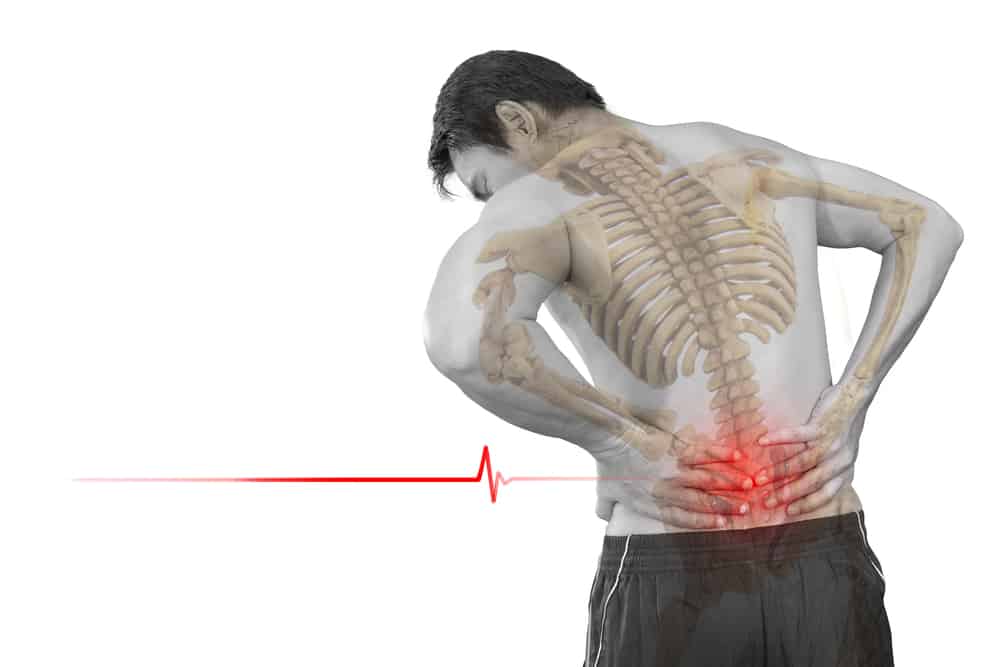
 Description
Description